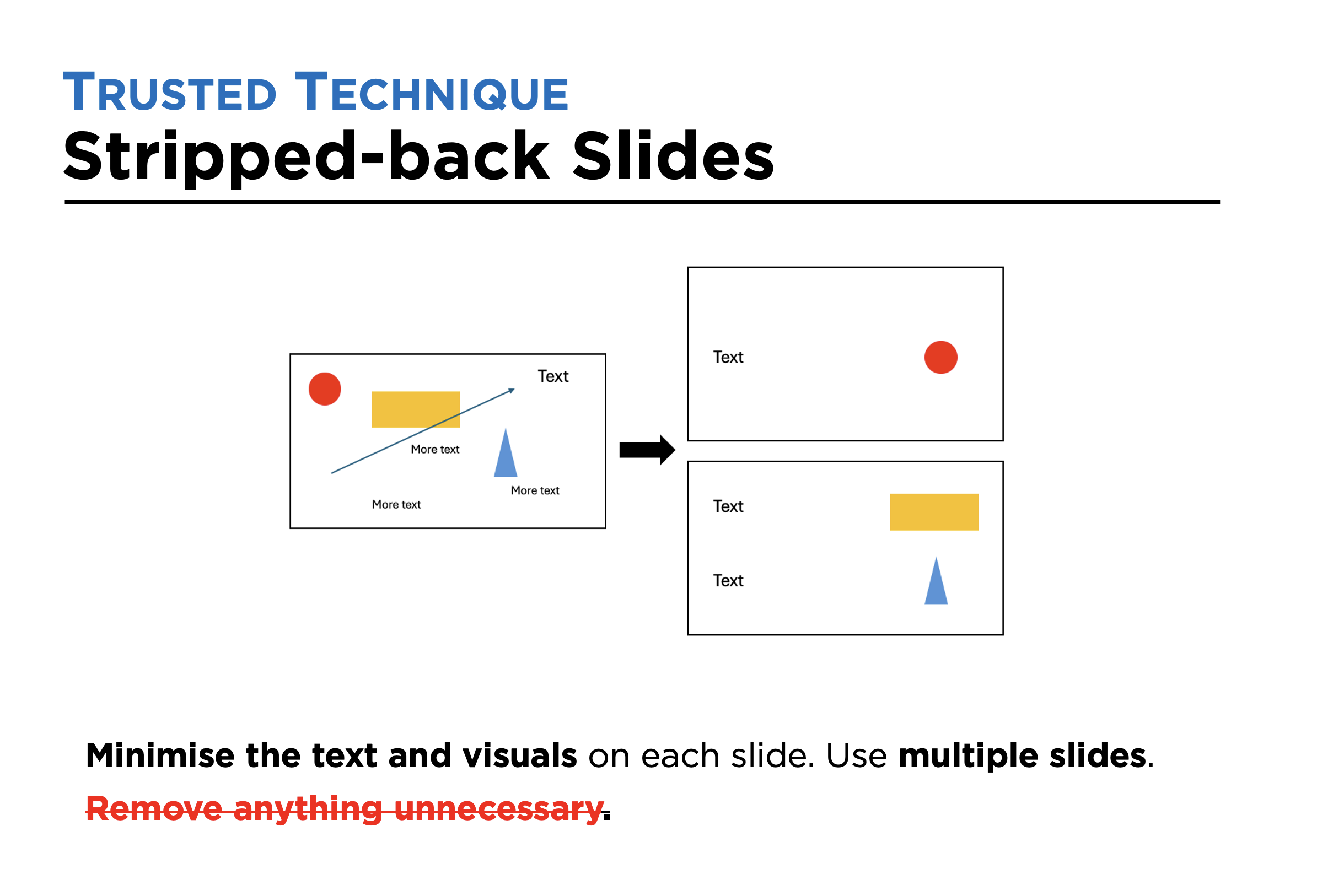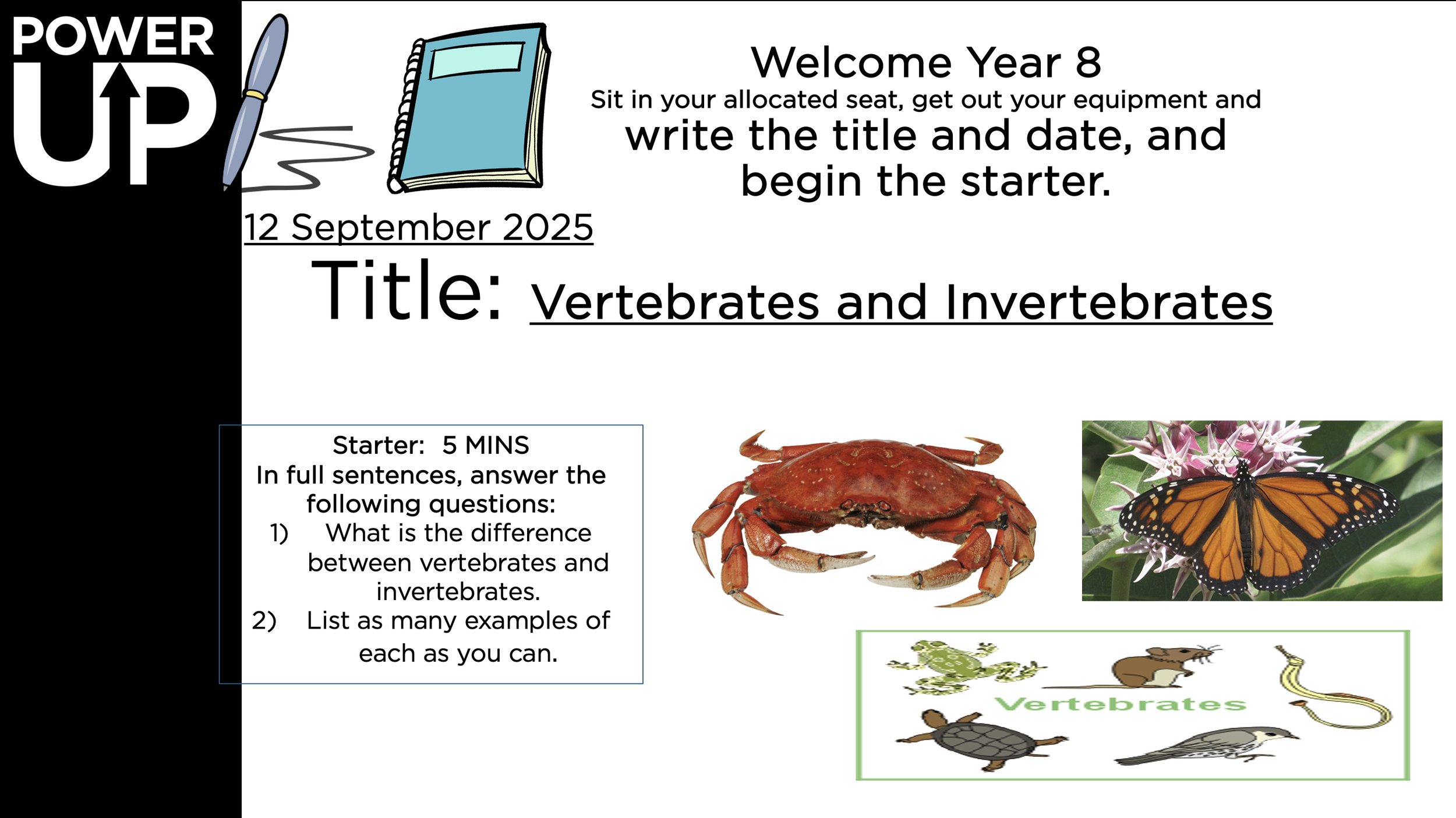Stripped-back Slides
Dense, crowded slides aren’t particularly great for students’ learning. If you feel this is something you want to address in your teaching, a Trusted Technique that can be useful is Stripped-back Slides.
With this technique, you focus on minimising the amount of information on any one slide, and organising this carefully to help steer students’ attention towards the the things you want them to think about. Less is almost always more.
Try not to have slides that looks like this…
…or like this…
…and focus on slides that look more like this…
Credit to Daniel Willingham, author of the excellent Why Don’t Students Like School? for this visual.
The rationale for Stripped-back Slides is that to help students learn, we need to get information into their working memories so they can think about it. Crammed, cluttered slides aren’t a great way to do that. Beyond this, stripping slides back can help make them more visually appealing, increasing the likelihood that students will be motivated to pay attention to the things we want them to be.
Top Tips
Minimise the content on each slide and use multiple slides to convey messages that might previously been communicated using one full slide.
If a slide has a lot of content, use the animations feature of PowerPoint, so text and visuals appear at different times.
If you are doing using animations, keep these simple - ‘appear’ and ‘disappear’ fit this brief. Fancy animations such as ‘swivel’ and ‘fly in’ tend to cause avoidable distractions and can get in the way of students thinking about the things we want them to be.
What about students’ notes?
The fear that some teachers have with stripped-back slides is that these will lead to stripped-back notes, which won’t be good enough for students to study with. Yes, students often need a good set of notes. But no, these don’t need to be produced by copying slides. Copying information is passive - it doesn’t require thinking - and is a relatively poor way for students to learn. It is an example of what we might call a ‘being busy activity’. If students need good notes, we can give them prewritten sets or make copies of our PowerPoint slides available to them. The time saved in lessons can be used for better ‘learning activities’: those that involve thinking.
I need detailed slides to support my teaching
Another fear teachers can have with stripped-back slides relates to their own confidence with the content they are teaching. If we lack confidence, we often put more on our slides to support our delivery. This is understandable, but there are other, better, ways we can get any support we need. These include using the ‘notes’ feature of PowerPoint (text is available for presenter to see, but not the audience) and spending part of lesson planning time rehearsing what we want to say in a focused, deliberate way.
Focused reflection
How well do you currently use this technique?
Is it a technique you will focus on developing?
If so, what are the key features you will focus on (things to do, and not do)?




